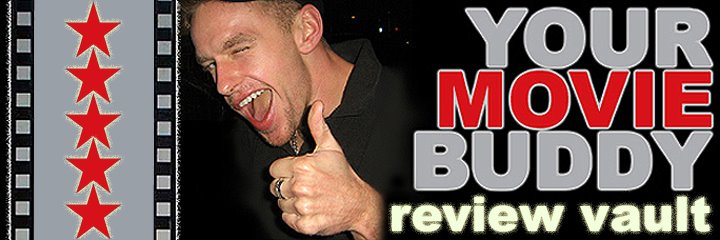3 stars (out of 5)
By R. Kurt Osenlund
Last week I saw and reviewed the journalistic thriller “State of Play,” which had its closing credits superimposed over a Learning Channel-ready sequence of newspapers going to press, from lithographic plate to street corner. This week it's the fact-based tale “The Soloist,” which uses practically the same printing process as the backdrop for its opening titles, creating a smooth, serendipitous segue between the two films that couldn't go unmentioned. In “State of Play,” the images are used to romanticize the newspaper biz and drive home the need for truth in stark black and white. In “The Soloist,” their primary function is to introduce the life and work of Steve Lopez, a real-life Los Angeles Times columnist who in 2005 met Nathaniel Ayers, a homeless schizophrenic who just happened to be a brilliant classical musician. Lopez began writing a series of enormously popular columns on Ayers and, in the process, unexpectedly became the former Juilliard prodigy's benefactor and best friend. Lopez's articles brought much-needed attention to mental illness and L.A.'s drug-infested, vagrant dumping ground, Skid Row. They also led to a book – Lopez's “The Soloist: A Lost Dream, An Unlikely Friendship, and the Redemptive Power of Music” – which, in turn, became this movie. Thanks to some beautiful imagery and interludes, the musical power remains intact, but a number of defects drain the drama from the friendship and make the dream of the story transitioning well to screen a lost one indeed.

Like “Rain Man” or “I Am Sam,” “The Soloist” is one of those inspirational stories in which the helper, not the less fortunate person being helped, unwittingly gets the most out of the relationship. Played by Robert Downey Jr., Lopez is presented early on as a disenchanted cynic with little interest in anything, least of all being a hero. When he first finds Ayers (Jamie Foxx) playing a two-stringed violin in downtown L.A.'s Pershing Square, the writer sees the rambling, oddly-dressed, but clearly skilled musician as just another subject, visibly distancing himself from whatever woes brought Ayers to such a fractured state. But as he digs deeper, and as his columns gain an increasingly devoted following, Lopez, reluctantly then resolutely, embarks on a mission to help the initially obstinate Ayers reestablish his talent, his sanity and his place in the world. In reality, the trials and triumphs of the atypical alliance changed the lives of both men, eventually getting Ayers off the street (and into the Skid Row shelter LAMP), and revitalizing Lopez's passion and career. It's clear that the film, written with very little grace by Susannah Grant (“Erin Brockovich”) and directed with an equally heavy hand by Joe Wright (“Atonement”), is intended to convey those same profound changes, but it rarely succeeds, often unfolding before our eyes on emotional autopilot.
In order for any on-screen relationship to be dramatically effective, two things are needed: a believable, carefully-laid foundation between characters and chemistry between the actors playing those characters. “The Soloist,” which is entirely about its on-screen relationship, has neither. Blame it on Grant's running-time-conscious script, which whittles Lopez's and Ayers's bond down to a succession of plot-advancing encounters, breezing past important stuff like both men's motivations to get to (apparently) more important stuff like flashbacks and conflicts. Problem is, conflicts are futile without audience concern, and I never truly cared about – or even knew – why these guys were doing what they were doing and/or what they meant to each other. Blame it also on Wright, who facilitates Grant's chomp-at-the-bit adaptation with predominantly weightless scenes, and favors melodrama and stylish tricks over real drama and subtlety. Particularly in the ill-conceived flashbacks (which exhibit Ayers's lifelong musical aspirations and mental struggles), the director orchestrates disingenuous moments and makes irritatingly literal the voices in the soloist's head. Most reprehensible is Wright's failure to inspire his stars to create any real connection. Don't blame it on Foxx or Downey Jr., for both actors give dynamic, first-class performances individually. Together, though, they have the rapport of two people working on two different films, a fatal flaw that conclusively prevents “The Soloist” from ever reaching far beyond superficiality.

But, oh, what superficiality to behold! “The Soloist” benefits much from the crafty cinematography of Seamus McGarvey, the same Irish D.P. who made “Atonement” so breathtakingly lush and grandiose. Lyrically visualizing the director's wiser decisions, McGarvey does some slick and splendid things with his camera, such as fluidly pulsing through the L.A. Times newsroom in unbroken takes, offering bird's eye views of L.A.'s criss-crossing freeways, soaring through the Disney Concert Hall from the stage to the nosebleed section and homing in on Foxx's fingers as Ayers creates chords with various stringed instruments (he plays the violin, cello and bass, among other things). It is the photography that communicates that “redemptive power of music,” especially when paired with the film's exquisite sound and music design. When Ayers plays, “The Soloist” takes well-appreciated pauses, and though Wright employs odd gimmicks like CG birds and laser shows (don't ask), the scenes are mesmerizing and they're some of the only scenes that achieve poignancy and express what the characters care about (the others belong to Foxx and Downey Jr., who each nail their own private dramatic crescendos).
Other pleasures contained in “The Soloist” include a strong-as-usual but squandered Catherine Keener as Lopez's colleague and ex-wife; some cameos from seemingly non-actor homeless folks that dodge exploitation; and Ayers's continuously bizarre and gleefully colorful costumes, designed with uncaged inspiration by Jacqueline Durran (“Happy-Go-Lucky,” “Atonement”). But for a project with such encouraging source material and such an impressive pedigree (nearly everyone involved is at least Oscar-nominated), the movie is remarkably off-key, unable to hit the high notes of a remarkably uplifting true story.





